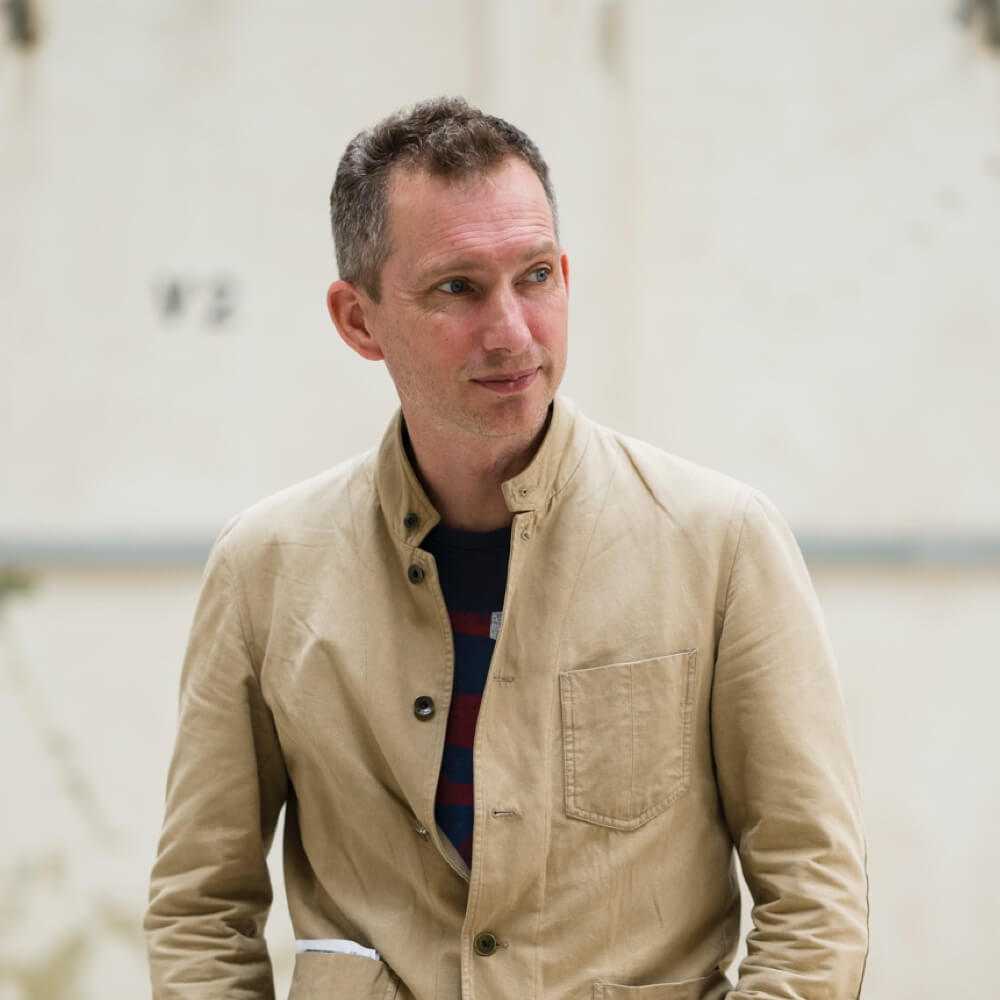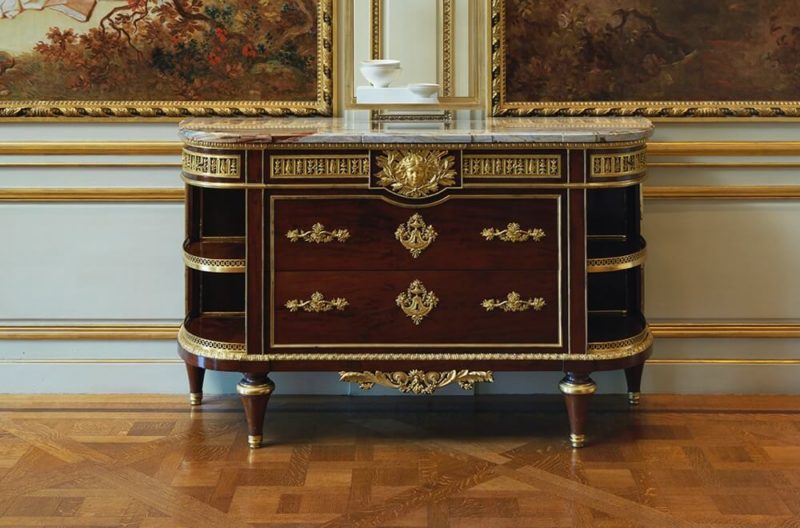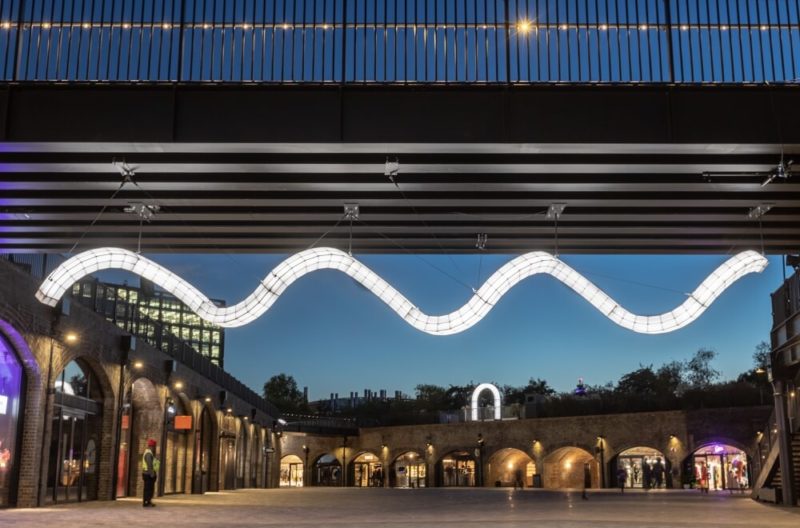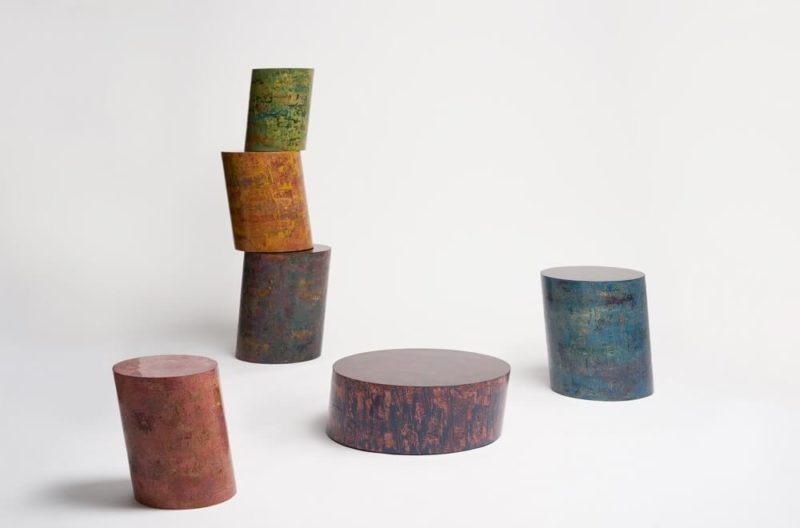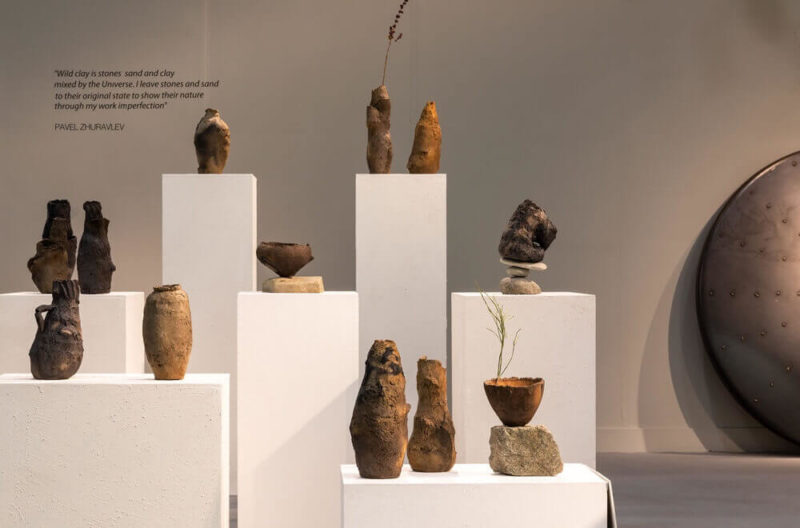Jennifer Lee: the potter’s space
An outstanding exhibition from the Loewe award-winning ceramicist.
AWARDS ARE IMPORTANT to any field of endeavour. They are a sign of health, an essential indication that people are taking an interest. And if people are interested, then sponsors are interested. With sponsors comes money – and there’s nothing the media likes more than a large cash prize. More media results in more interest and, at least for a while, the circle feels virtuous.
Until very recently the crafts world was noticeably short of prizes. In the UK we have Jerwood Makers Open, launched in 2010, which gives a clutch of makers money (£8,000 in 2019) to create new – and hopefully boundary-breaking – work. It remains a delightful scheme that over the years has produced some genuinely eye-popping pieces, but it also lacks an essential sense of glamour. It’s also a little … well, domestic. Then two years ago something dramatic happened. The luxury accessories company Loewe launched its eponymous Craft Prize. Here was a global event offering the winner a cool 50,000 Euro. What’s more its creative director (and renowned fashion designer) Jonathan Anderson gave proceedings more than a hint of catwalk-inspired, stardust.
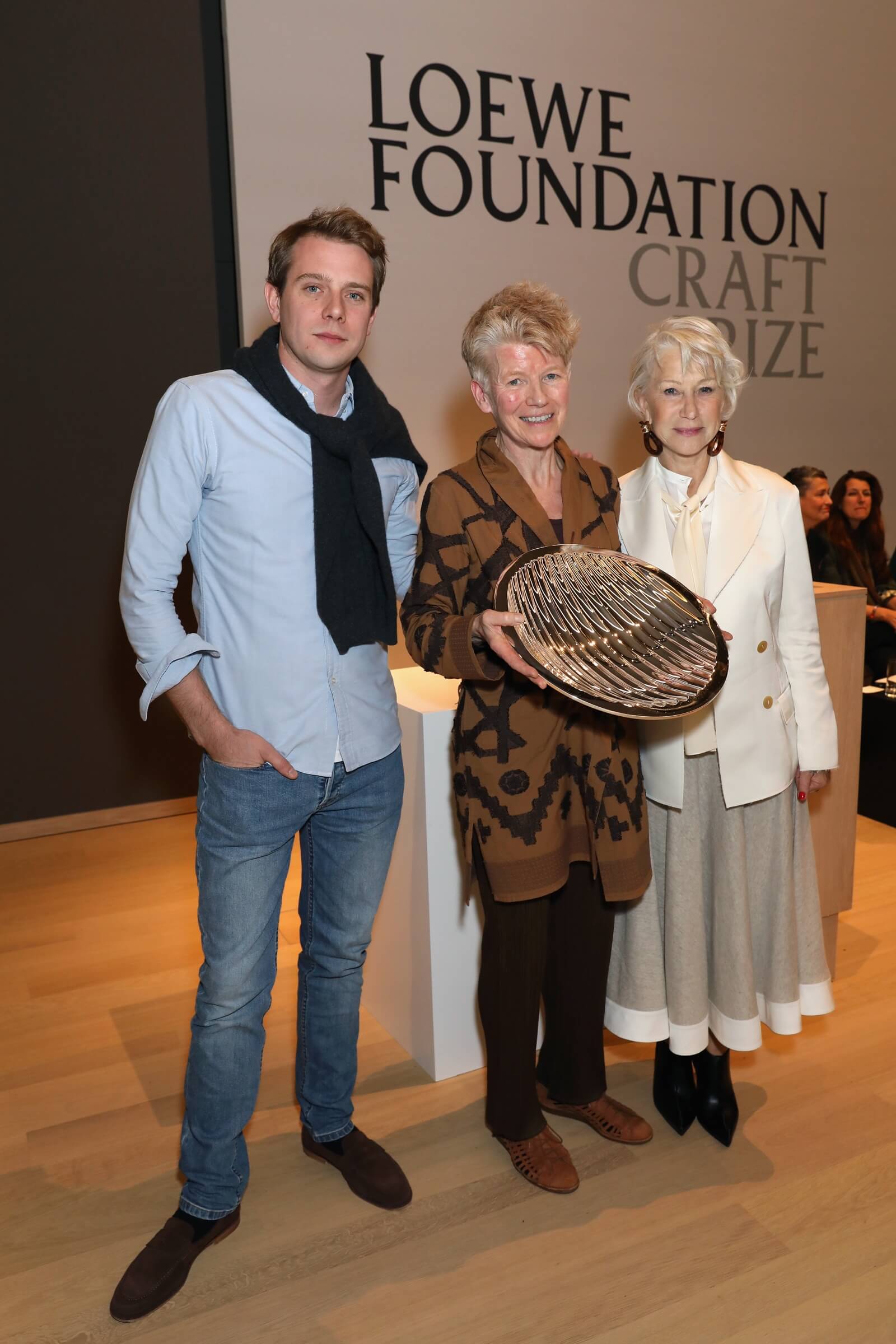
Jonathan Anderson, Jennifer Lee and Dame Helen Mirren (left to right), at the presentation of the Loewe Craft Prize, 2018
COURTESY: Loewe / PHOTOGRAPH: Darren Gerrish
Genta Ishizuka was the judging panel’s favourite this year. However, in 2018 it was won by Jennifer Lee in a hugely emotional ceremony at the London Design Museum, hosted by a crying Helen Mirren. The ceramist has just opened her first major show since the prize at Cambridge’s Kettle’s Yard. And very good it is too.
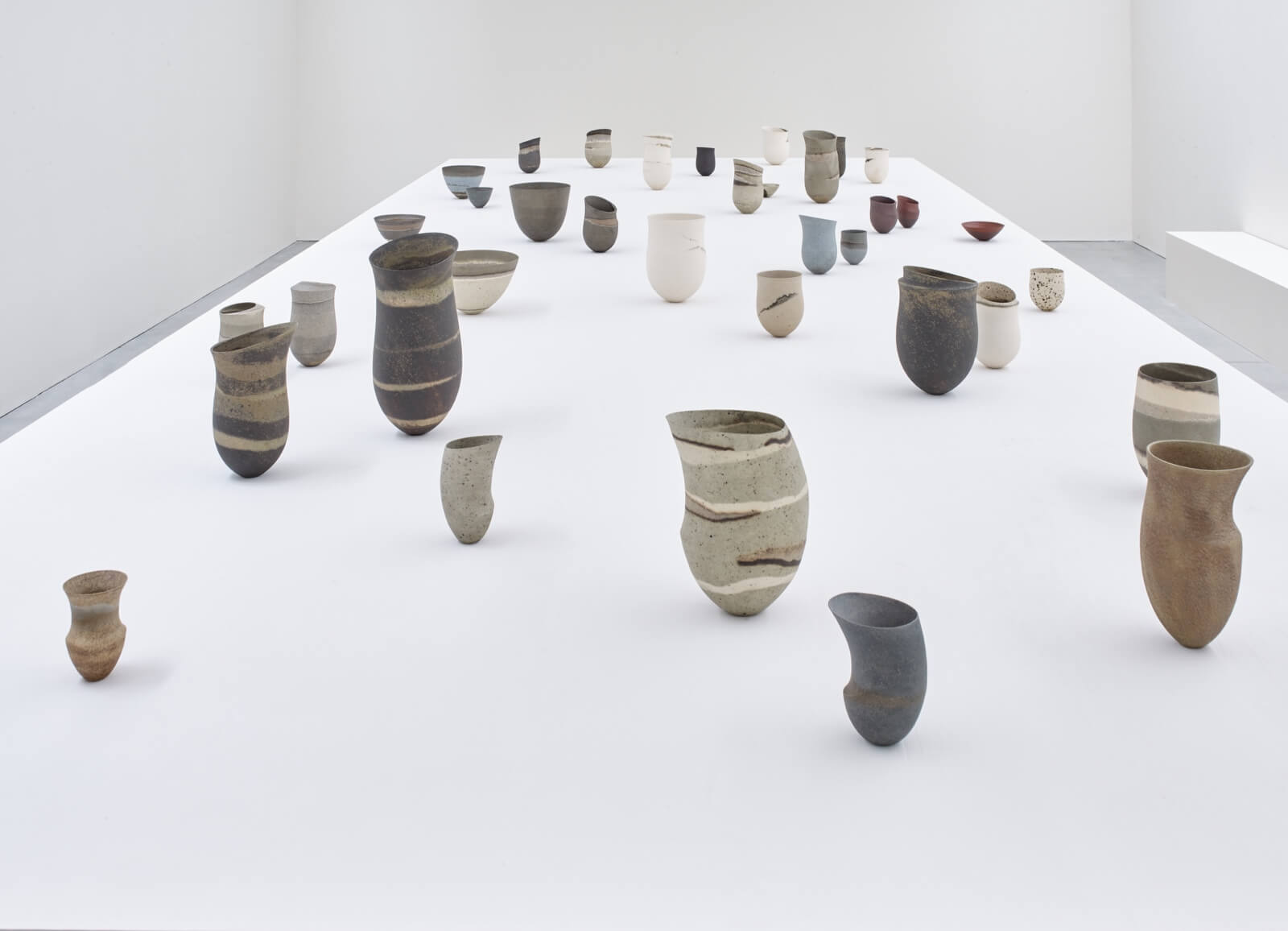
‘Jennifer Lee: the potter’s space’, Kettle’s Yard, University of Cambridge, 2019
PHOTOGRAPH: Stephen White
‘Jennifer Lee: the potter’s space’ encompasses 40 works that span her 40-year career. The show, designed by Jamie Fobert Architects – which was also responsible for the gallery’s extension – is essentially split into three sections. There are drawings, sketch books, pieces of research and a rather charming film of the artist (shot and edited on grainy Super 8 by Jake Tilson) in the gallery’s research space. A handful of pots have been placed in the main house itself, sitting comfortably in the soft, British modernist surroundings created by architects Sir Leslie Martin and David Owers (together with the original owners, Jim and Helen Ede). But the bulk of the pieces can be found, artfully scattered on a single plinth, in the new gallery.
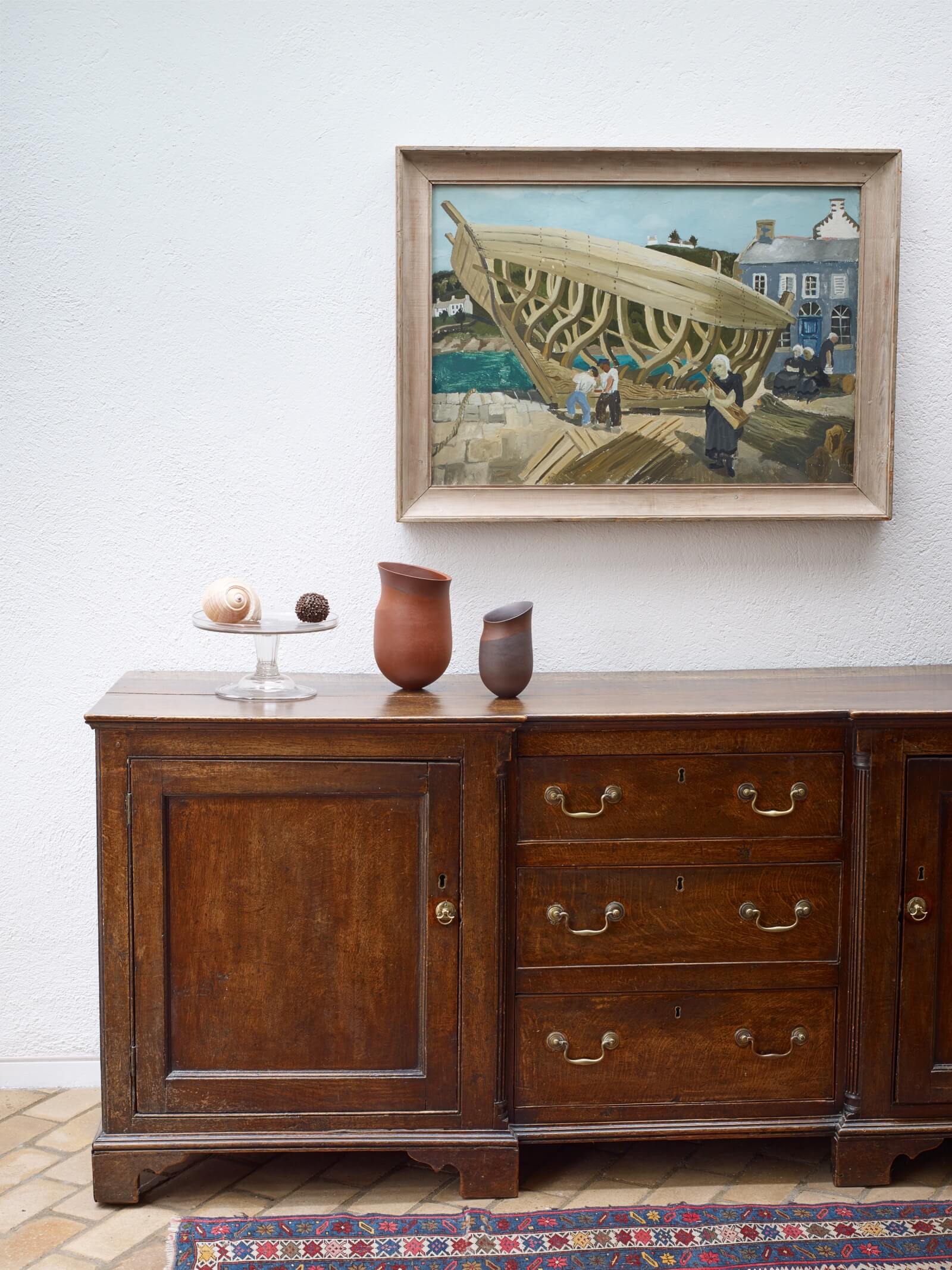
‘Jennifer Lee: the potter’s space’, Kettle’s Yard, University of Cambridge, 2019
PHOTOGRAPH: Stephen White
Broadly speaking the vessels have been arranged in chronological order, from two pots Lee made during her masters degree at the Royal College of Art in 1983, which allows visitors to see if the artist’s work has progressed. And it has, just very slowly. It’s worth pointing out that Lee could never be described as a prolific artist. Today she produces around 12 of her hand-built, unglazed stoneware pieces a year. Her vessels are coloured by introducing metal oxides into her raw material and, famously, she keeps an archive of coloured clays – some of which she mixed 30 years ago. In other hands, perhaps, this could be perceived as a lack of ambition, a desire to play safe. But here that simply isn’t the case.
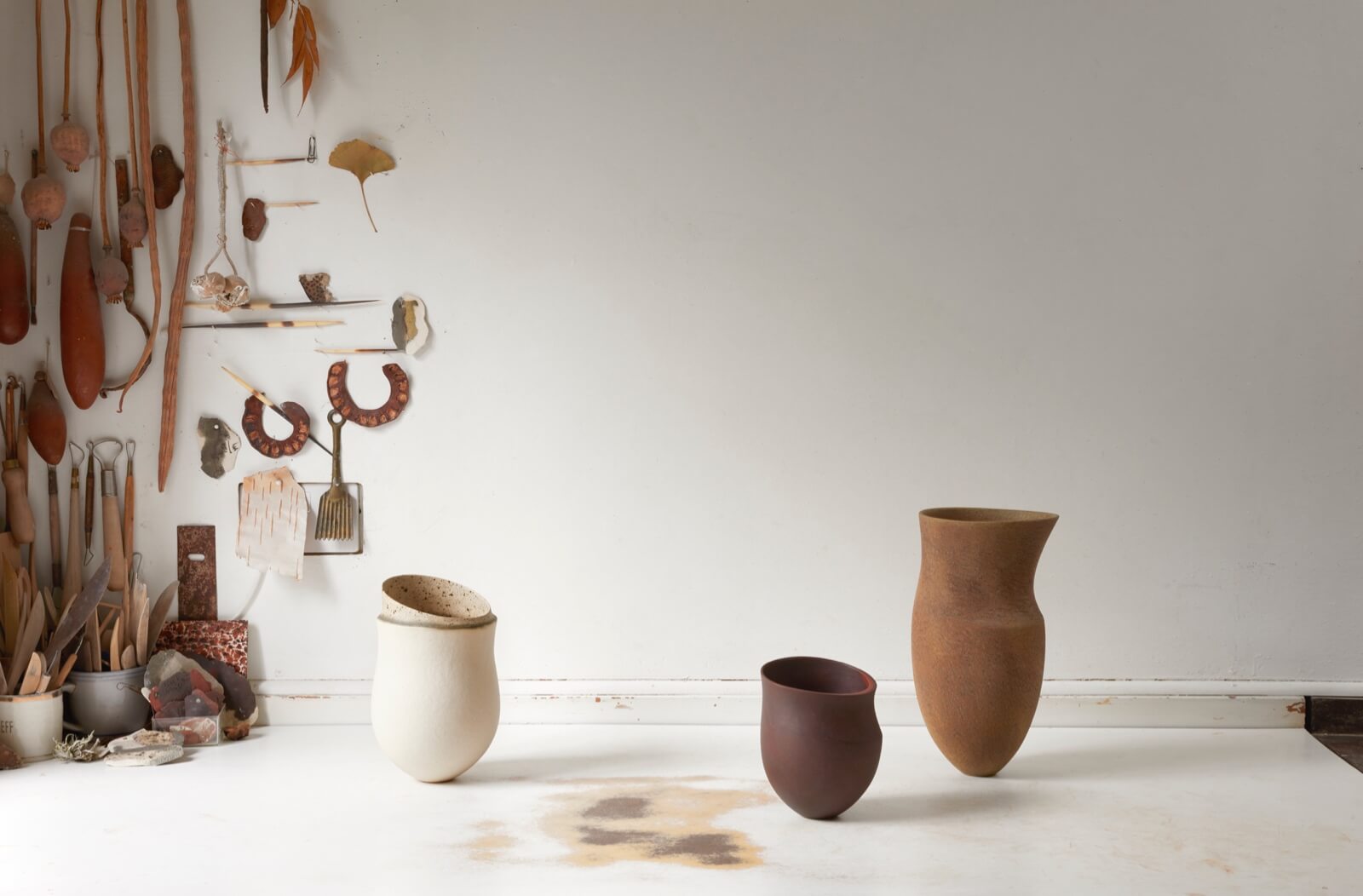
Jennifer Lee, ‘Pale, speckled, emerging rim’, 1997 (left); ‘Shigaraki Red, dark, red tilted shelf’, 2014 (centre); ‘Asymmetric amber lichen’,
1986
PHOTOGRAPH: Jon Stokes
So what is it about her work that makes it so (award-winningly) fascinating? The artist herself, a charming but ever-so-slightly reticent character, doesn’t speak (or write) much about her thinking – and the show itself is largely devoid of text. Instead visitors have to decide for themselves. To my mind the key is in trying to work out exactly where her pieces fit. The vessels’ specks and striations of colour, as well as their lack of surface glaze, suggest that they belong to the landscape. Yet, by the same token, these definitely aren’t rural pots – something that has led critics to ponder on Lee’s own journey from her childhood home on an Aberdeenshire farm to her current studio in urban Camberwell. They also possess an innate sense of timelessness. Lee developed a fascination with Neolithic Egyptian clay forms as a student, for example, but there’s also an economy and a quiet elegance – derived from their narrow, pinch pot bases that flare to their (sometimes asymmetric) rims – that seems thoroughly modern. Ultimately her pots seem to radiate the knowledge, skill and attention to detail that has been exerted in their making, yet there an intrinsic warmth here too. They implore you to look, and look carefully.
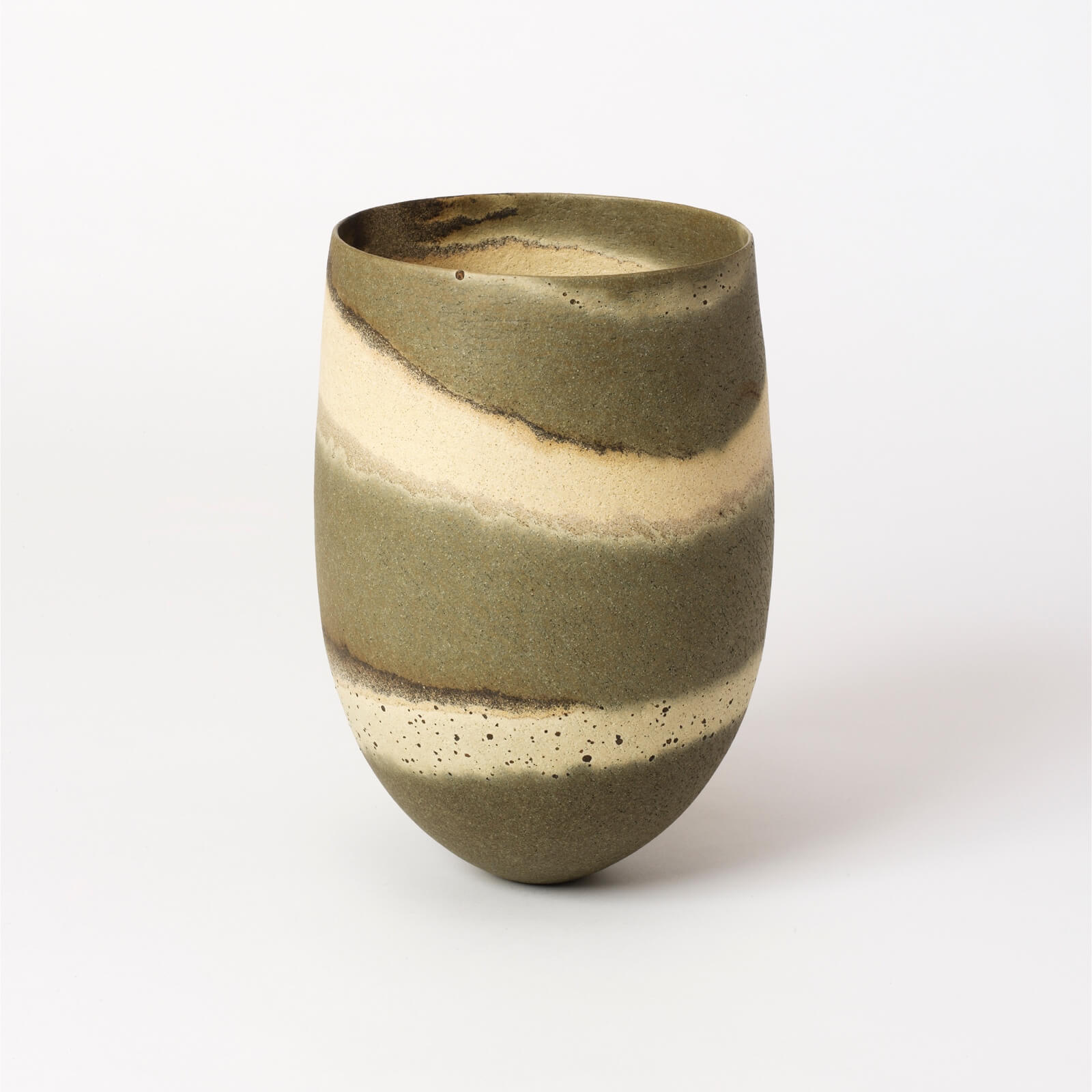
Jennifer Lee, ‘Olive banded, speckled coral bands’, 1991
PHOTOGRAPH: Jon Stokes
The fact that they all relate to one another, one form playing off the next, gives Fobert’s ‘monolithic plinth’ an enjoyable logic. The plinth itself is the same height as Lee’s studio workbench, bringing her working life into the public realm, which is a nice touch. Although the one issue is that it’s difficult to inspect the pots in the middle of the plinth, from every angle.
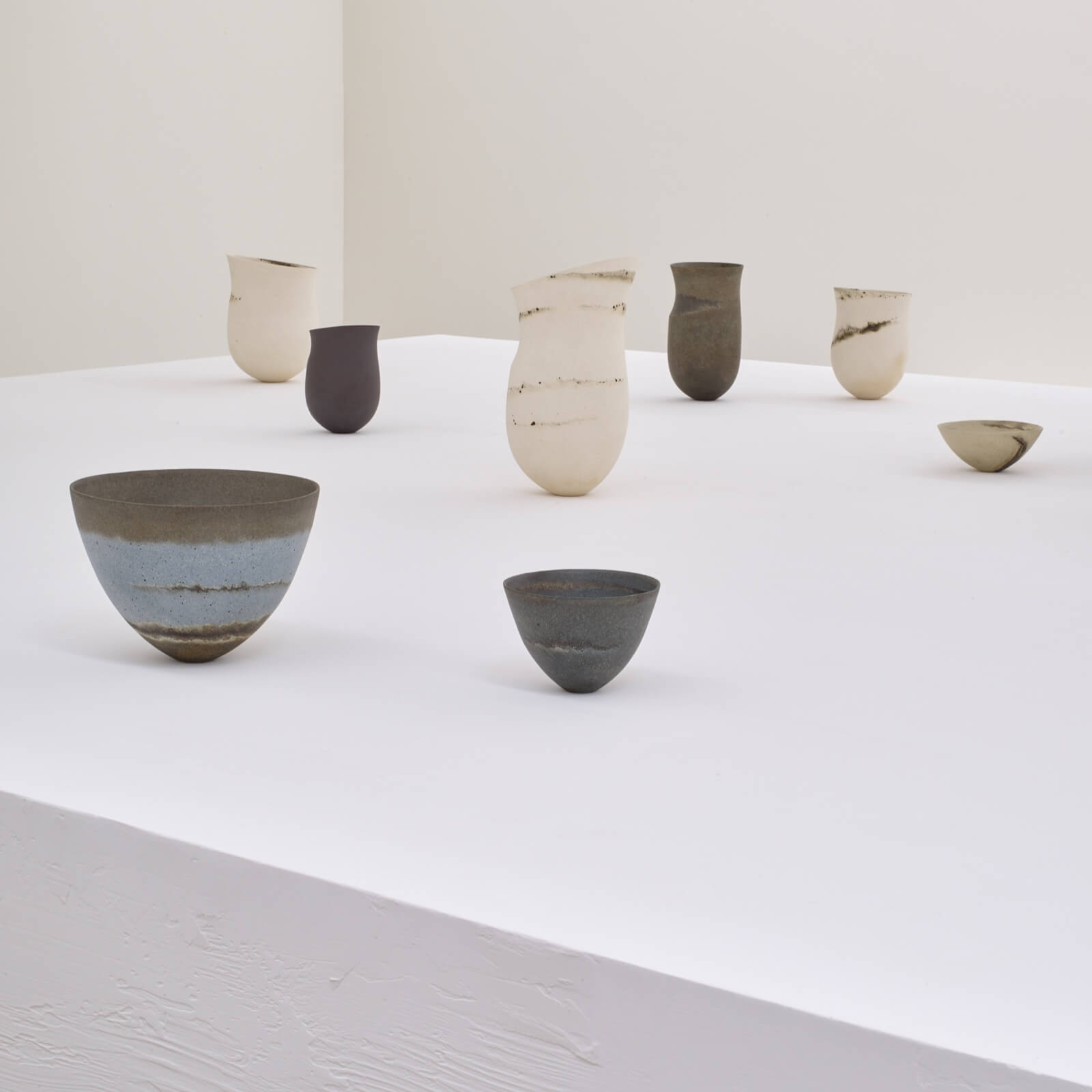
‘Jennifer Lee: the potter’s space’, Kettle’s Yard, University of Cambridge, 2019
PHOTOGRAPH: Stephen White
Meanwhile upstairs in the research space it becomes quickly apparent that Lee is equally adept with a pencil in her hand. Drawing plays a vital role in her work: initially she makes rough notes before building, but after firing she makes detailed sketches from different angles as a method of understanding what she has just made and how she might improve the next iteration. It’s an intriguing process.
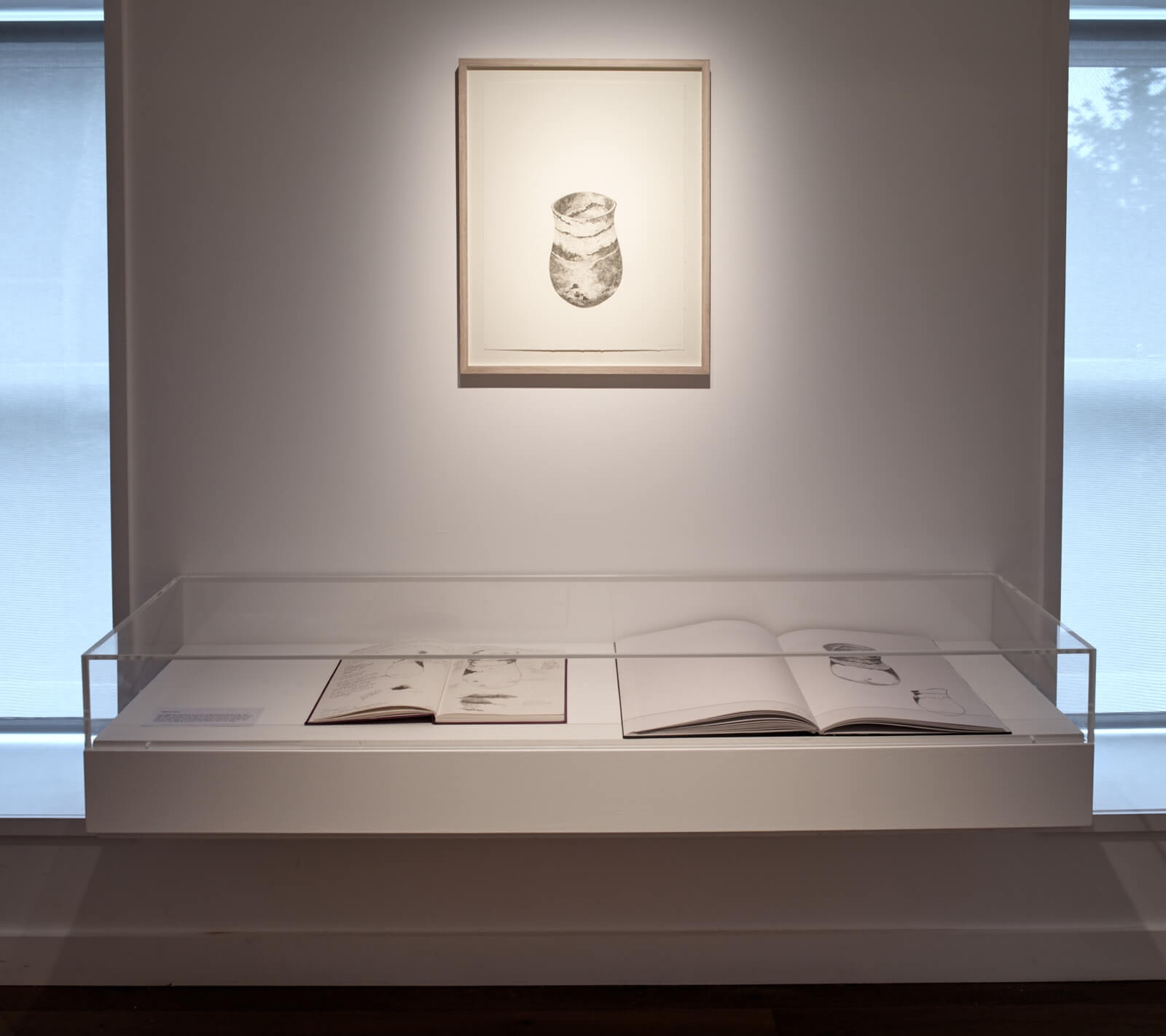
‘Jennifer Lee: the potter’s space’, Kettle’s Yard, University of Cambridge, 2019
PHOTOGRAPH: Stephen White
Loewe’s 50,000 euros might be a lot of money, but on this evidence Jennifer Lee is worth every penny.
